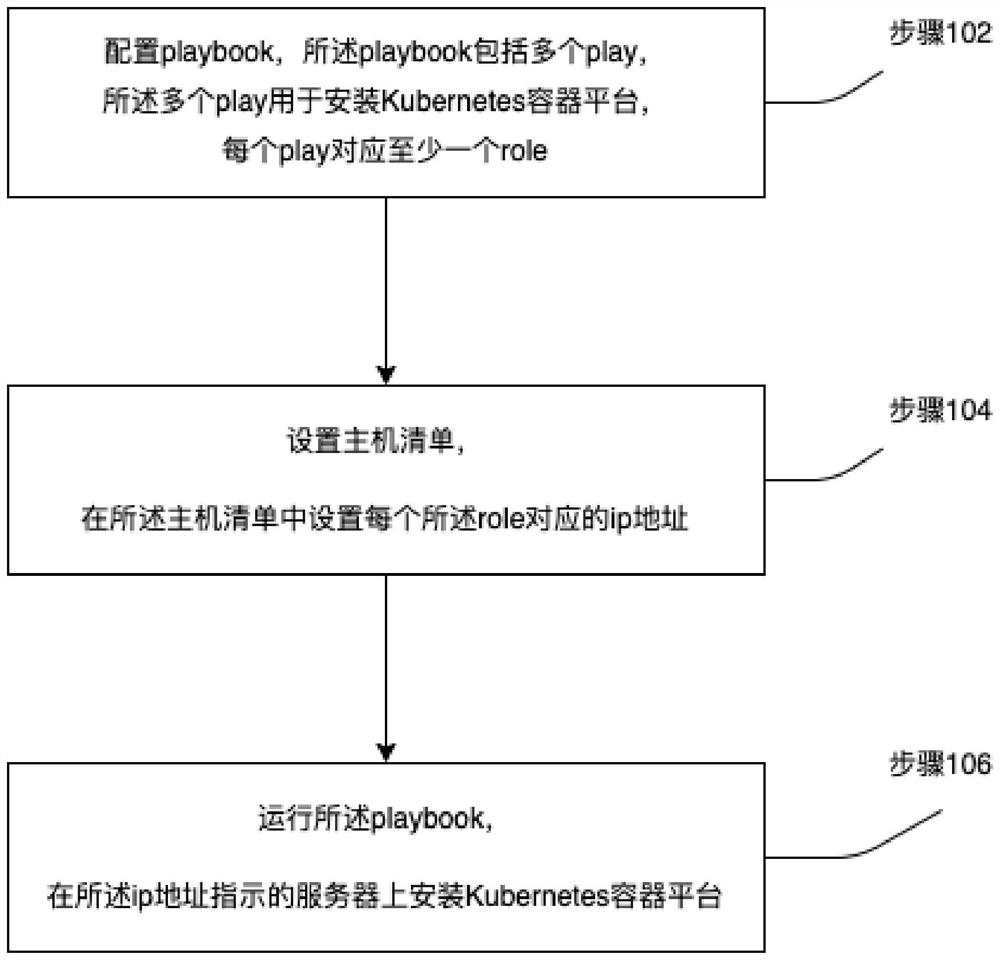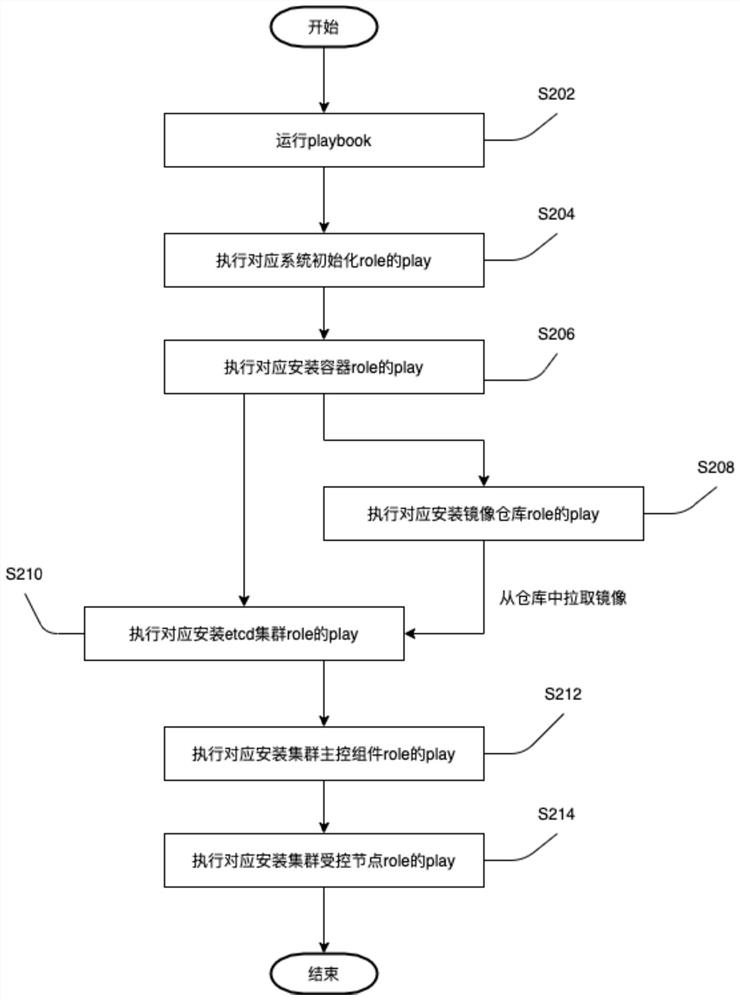Method and equipment for automatically building container platform based on ansible
A container and platform technology, applied in the field of micro-service computer system deployment, can solve problems such as increased deployment time, high cost of manual learning, difficulty in micro-service application and popularization, and achieve the effect of reducing resource consumption
- Summary
- Abstract
- Description
- Claims
- Application Information
AI Technical Summary
Problems solved by technology
Method used
Image
Examples
Embodiment Construction
[0031] The present application will be described in more detail below with reference to the accompanying drawings. Although preferred embodiments of the present application are shown in the drawings, it should be understood that the present application may be embodied in various forms and should not be limited to the embodiments set forth herein. Rather, these embodiments are provided so that this application will be thorough and complete, and will fully convey the scope of this application to those skilled in the art.
[0032] As mentioned above, Kubernetes is of great significance to the application, popularization and promotion of microservices. However, manual deployment of Kubernetes clusters is currently required, resulting in inconsistent system environment versions, increased deployment time, high manual learning costs, and difficult migration. The application of microservices brings great difficulties.
[0033] After an in-depth understanding of many technical soluti...
PUM
 Login to View More
Login to View More Abstract
Description
Claims
Application Information
 Login to View More
Login to View More - R&D
- Intellectual Property
- Life Sciences
- Materials
- Tech Scout
- Unparalleled Data Quality
- Higher Quality Content
- 60% Fewer Hallucinations
Browse by: Latest US Patents, China's latest patents, Technical Efficacy Thesaurus, Application Domain, Technology Topic, Popular Technical Reports.
© 2025 PatSnap. All rights reserved.Legal|Privacy policy|Modern Slavery Act Transparency Statement|Sitemap|About US| Contact US: help@patsnap.com


